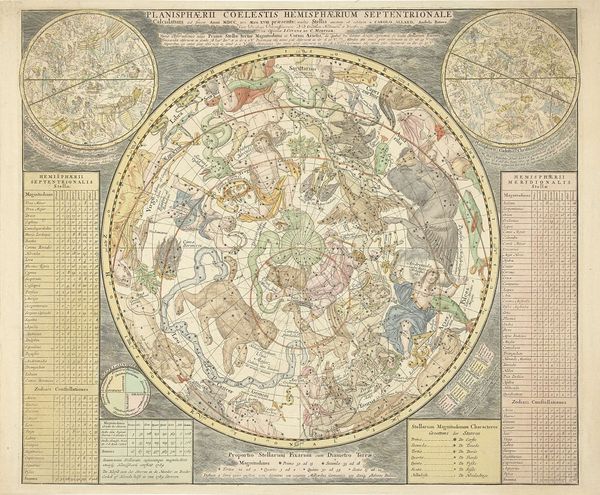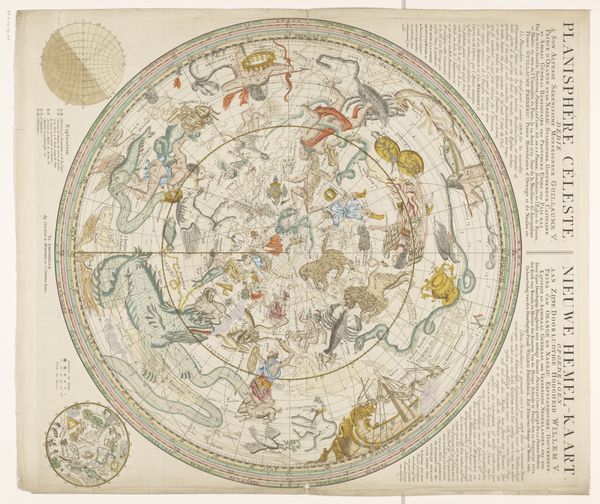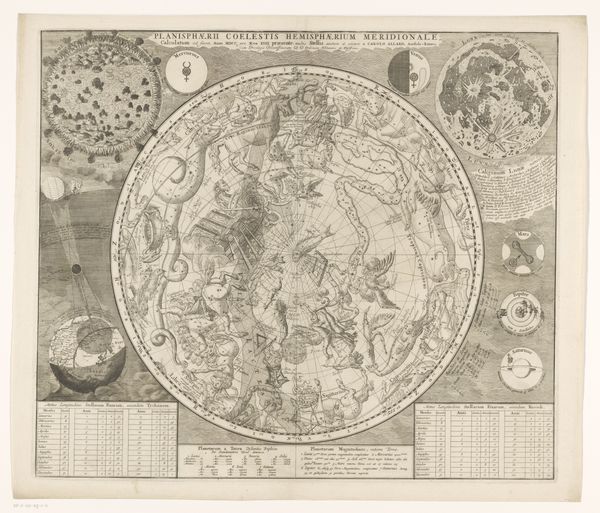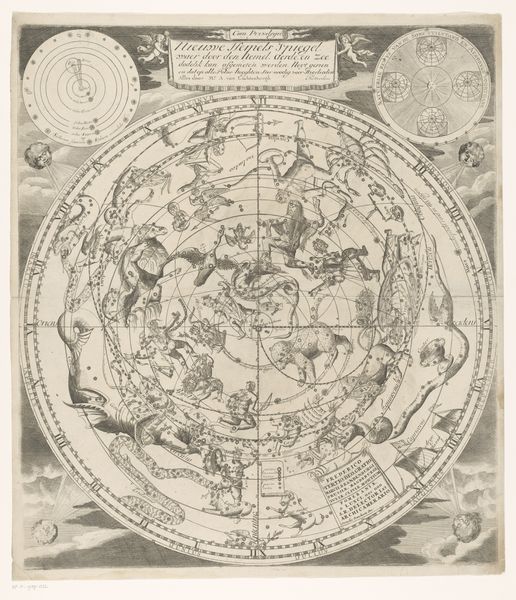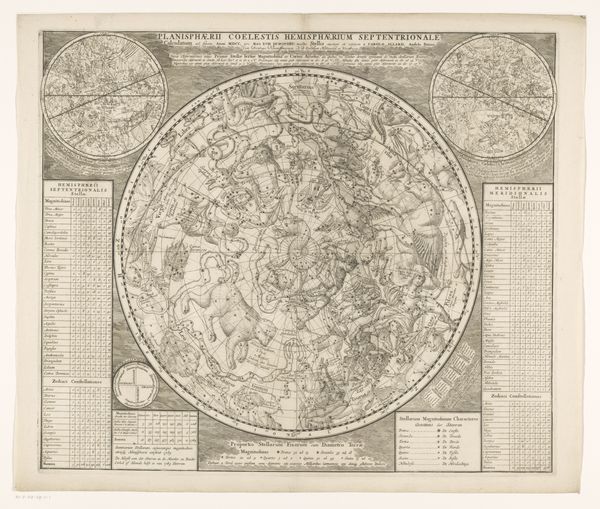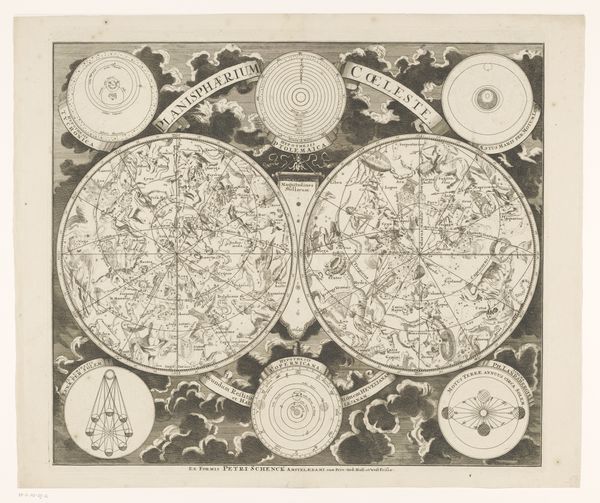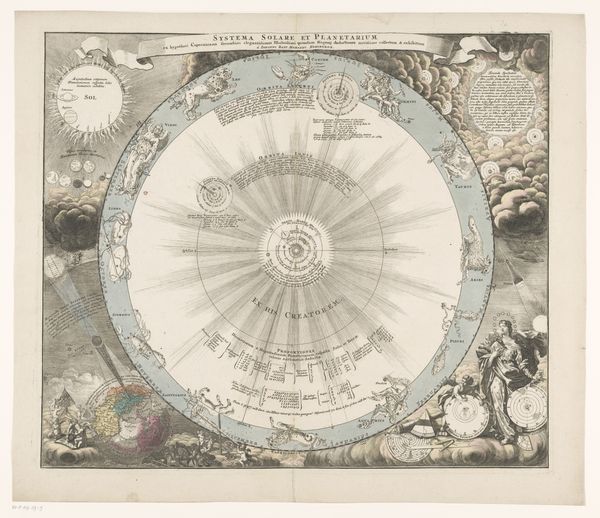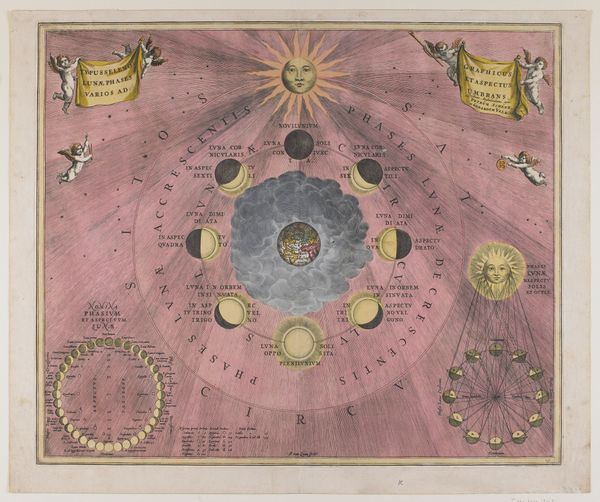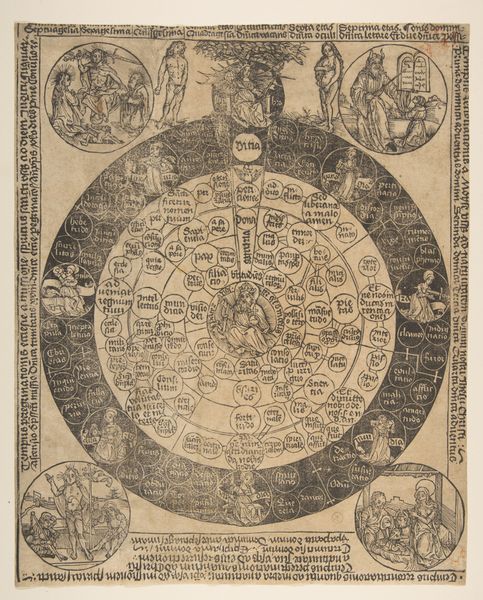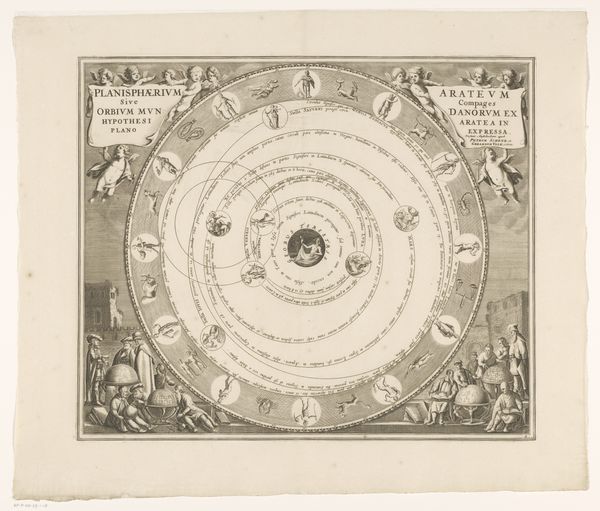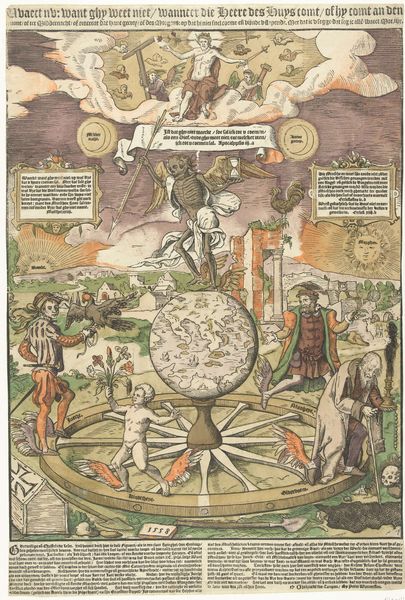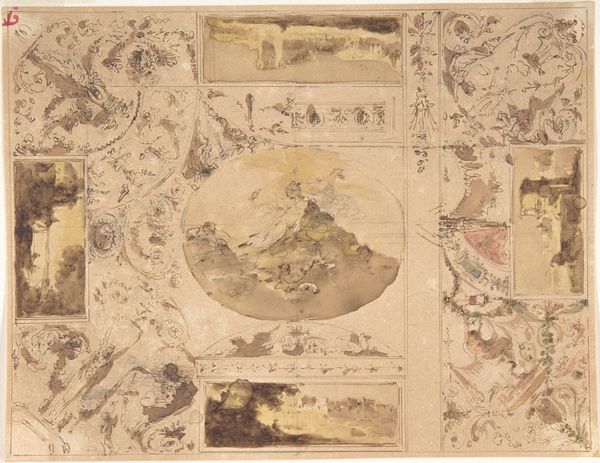
print, engraving
# print
#
landscape
#
geometric
#
line
#
islamic-art
#
history-painting
#
academic-art
#
engraving
Dimensions: height 510 mm, width 596 mm
Copyright: Rijks Museum: Open Domain
Curator: Here we have a striking celestial map titled "Sterrenkaart van de zuidelijke sterrenhemel," or "Star Map of the Southern Sky," crafted by Carel Allard, dating from approximately 1722 to 1750. It’s an engraving printed on paper. Editor: My first thought? Intricate chaos. All these figures intertwined. What was it like to even make something so precisely, technically detailed but also visually dense. Curator: Think of the process! The engraving, the paper… we’re talking about specialized workshops, artisan skills, the physical labor involved in creating each individual print. These weren't mass-produced in the way we think of today. It was an act of intense labor and the market around selling the print that enabled further material reproduction of knowledge about our solar system! Editor: And consider who had access to such an image, especially depicting the stars? Navigation, cartography—powerful knowledge was literally etched into this map. Who commissioned it? Who profited from its dissemination, and who was excluded? This is far from a neutral representation. Curator: Exactly. Celestial cartography wasn't just about science; it was about empire, exploration, control, and domination, wasn’t it? Think of this map as a tool for power – visually justifying a certain global vision in its day. Editor: These constellations became markers of Western expansion and colonial narratives—renaming the sky and rewriting Indigenous understandings. There’s so much erasure embedded in what seems like a beautiful, innocent astronomical chart. And the lack of acknowledgment that cartography was already being done around the world. Curator: Precisely! The labor of mapping, the availability of specialized knowledge of our universe, all underwrites this representation. I find it interesting, even slightly absurd, how concrete earthly power dynamics became superimposed onto our interpretations of these distant lights. Editor: These printed materials themselves are artifacts, relics that carry forward legacies of colonialism and scientific dominance. They encourage an idea of human control that maybe should have always been interrogated! Curator: A point extremely well taken. By looking at the techniques, social practices and conditions around these star charts, we begin to gain new, deeper insights into that fraught relationship between knowledge, power, and materiality. Editor: Right. Approaching it this way, it opens up new dialogues around our perception of historical global vision, revealing its political undercurrents, you could say, light-years away.
Comments
No comments
Be the first to comment and join the conversation on the ultimate creative platform.
